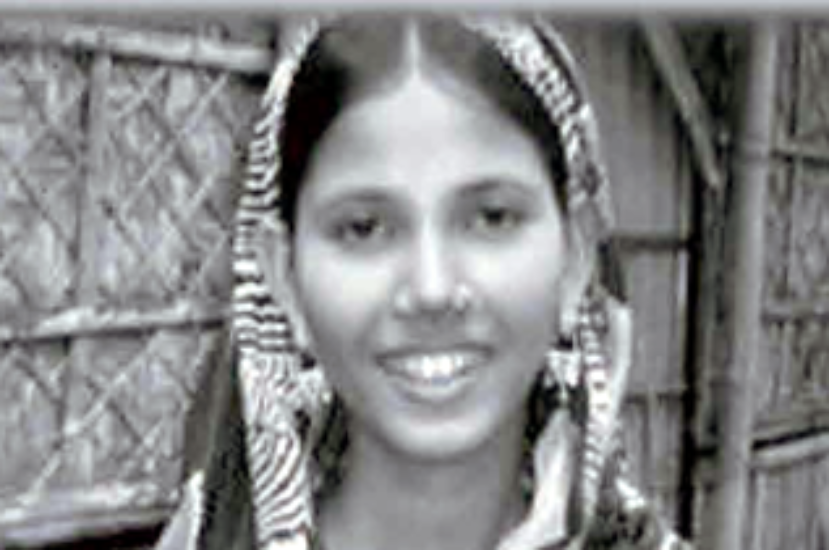1. Warm up activity:
write a 200 word passage on the topic.
neighbourhood. Discuss with your friends how you would convince the parents of
the girl to cancel the marriage.
questions that follow:
off daughters at an early age is a standard practice for many families living
in rural Bangladesh. After her wedding, Shilpi joined a local empowerment group
that provides adolescent girls with the tools needed to gradually change
cultural practices, particularly those pertaining to early marriage and
pregnancy.
The group’s activities include discussions on how to most
effectively change behaviour related to reproductive health as well as
one-on-one counselling. It also offers peer-to-peer support and life skills
training that help adolescents say no to early marriage. The empowerment group
is one of more than 10,000 groups supported by some local Non-Government
Organizations (NGOs) working all over Bangladesh. These NGOs work through
Canada’s Adolescent Reproductive Health Project which also aims to increase
access to quality health services for adolescents. During one of the group
sessions, Shilpi came to understand the potentially harmful effects of early
marriage and pregnancy.
percent since 2001, the rate remains high with 194 maternal deaths per 100,000,
live births in 2010-dropping from 322 in 2001 with a projected decrease to 143
by 2015. Girls who get pregnant are at risk of serious health complications.
These include dangerous
childbirth that commonly leads to serious maternal morbidities and social
exclusion.
to discuss pregnancy with a counsellor. After hearing about the risks, Rashid
agreed to delay having children for five years despite pressures from his
parents and neighbours to produce an offspring. Together, the couple met with a
female health care provider, who informed them about the various family
planning options available.
newlyweds. Deeply rooted cultural practices and traditions caused a rift
between Shilpi and Rashid and their extended family, some of whose members
insulted and criticized the couple. Unable to convince their close relatives of
the risks, Shilpi and Rashid returned to the counsellor. They took the help of
a parent peer who has been trained to speak to other parents about adolescent
issues. Shilpi’s mother-in-law and neighbours eventually came to understand the
harmful effects of early pregnancy on mother and child.
neighbours now support them and speak out against early marriage and pregnancy.
questions in pairs:
having children?
Shilpi and Rashid need?
do they do?
boys and girls in your locality who have already married?
4. The graph below shows the
percentage of 15-19 and 20-24-year-old married women in urban and rural areas
in Bangladesh who have experienced physical or sexual violence. What do you
think arc the reasons for violence against women? Discuss the graph in small
groups.
that describes the graph. Use the words given in the below:
to with
20-24 who have experienced physical or sexual violence. In general, it is seen
from the graph that women of both age groups arc more likely to be victims of
physical violence (a)——-sexual violence. The graph shows that 39.8 % of
rural married adolescents (aged 15-19) and 35.3 % of urban adolescents have
experienced some form of physical violence. On the other hand, 11.8% and 16.8%
respectively of the urban age groups of 15-19 and 20-24 have been (b)——–of
sexual violence. According to the graph, 11.8% and 16.8% married women in urban
areas in the age groups of 15-19 and 20-24 respectively have experienced sexual
violence (c)——–22.2% and 20.2% married women in rural areas, It is also
(d)——-from the graph that young women aged 20-24 are more likely to have
experienced physical violence than adolescents aged 15-19. (e)——-, younger
women in rural areas are somewhat more likely to have experience of sexual
violence than (f)——women. Overall, the graph shows an (g)——-picture of rural
and urban adolescents and young becoming victims of violence.
for you. Each tick mark is worth 1 point. Add up the points and check your
score.
you.
things.
organizations.
week.
changing yourself.
you.
up)
fuqn.’:iiitit»UL—I ,.I X ,*X981, ID&tabid-W]
higher, explain how important the family is in shaping one’s future.
10, write a page discussing how you think you can change your situation for the
better.
following words and w rite sentences using them:
If you want to read the next lesson of this unit please click the link below:
Lesson 5: Amazing Children and Teens Who Have Changed the World





Leave a comment